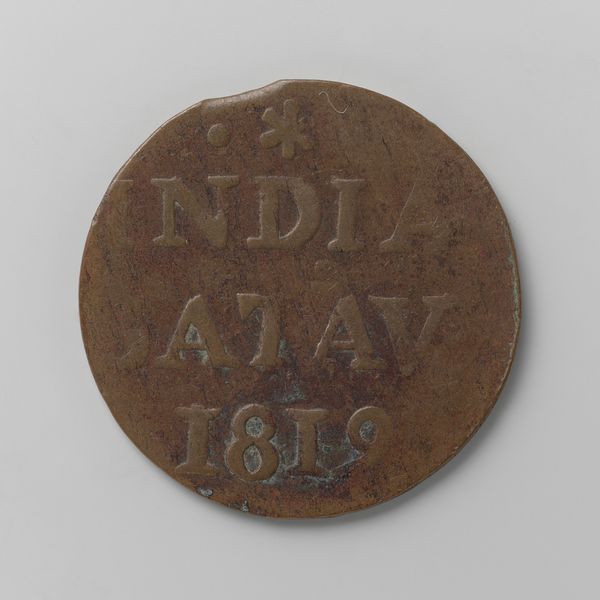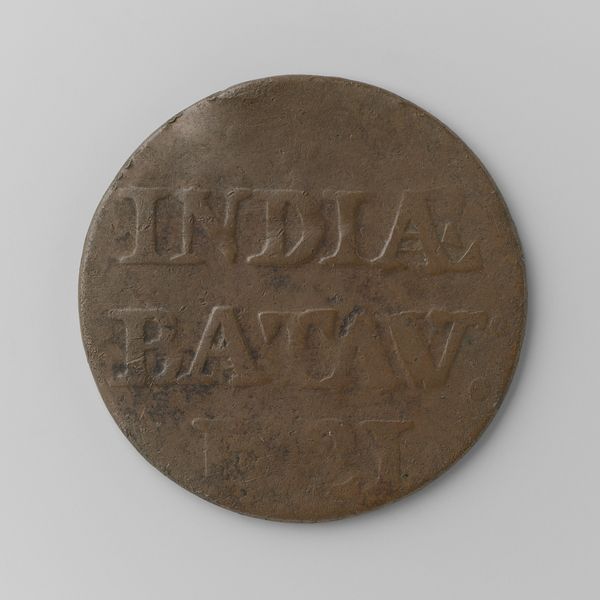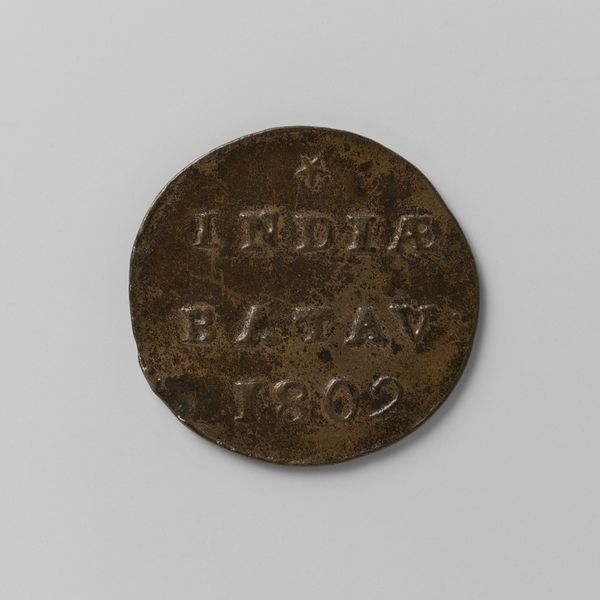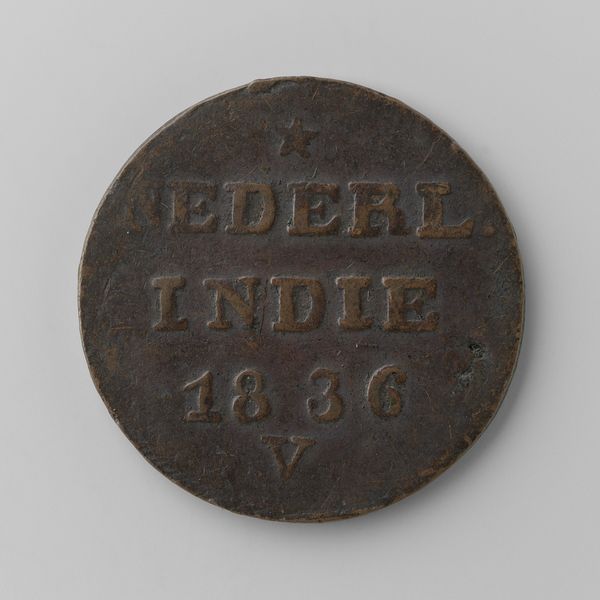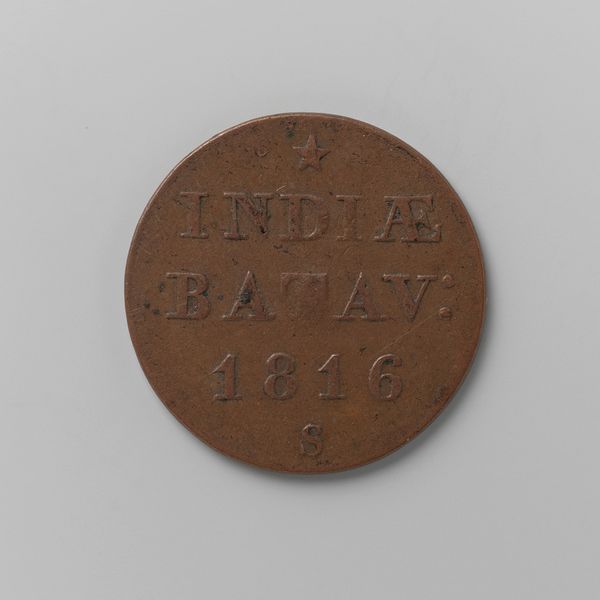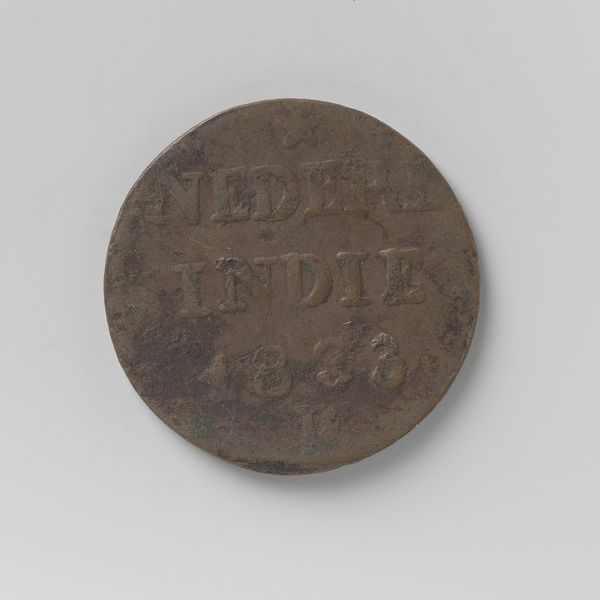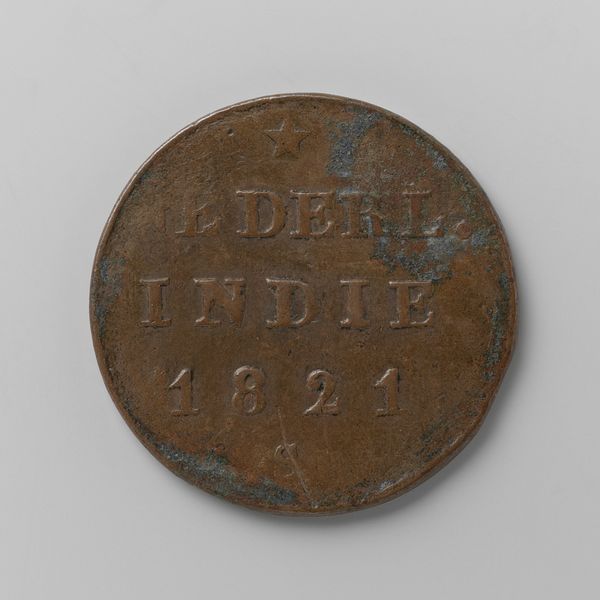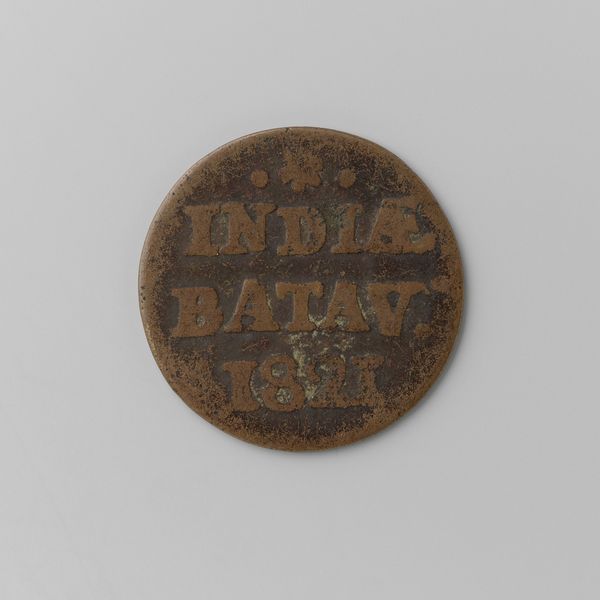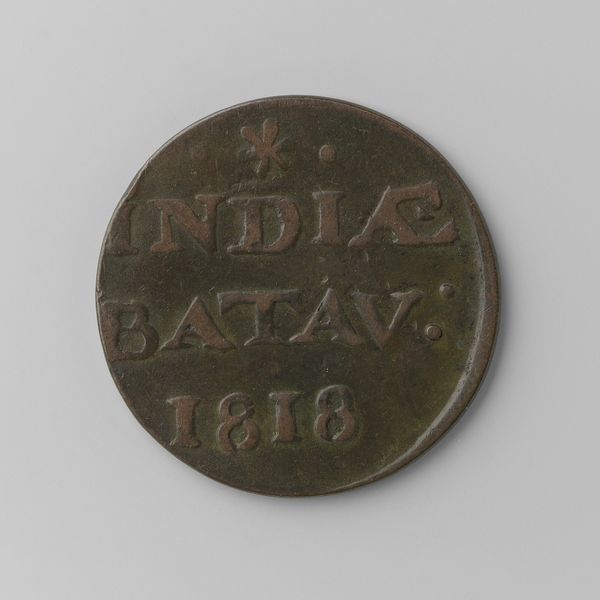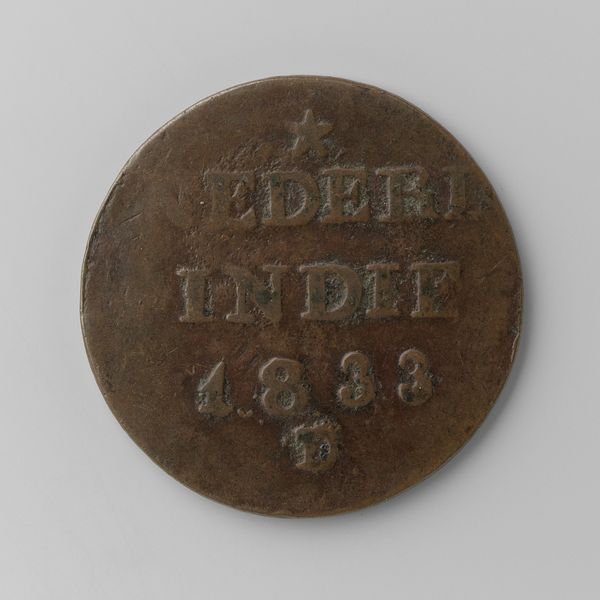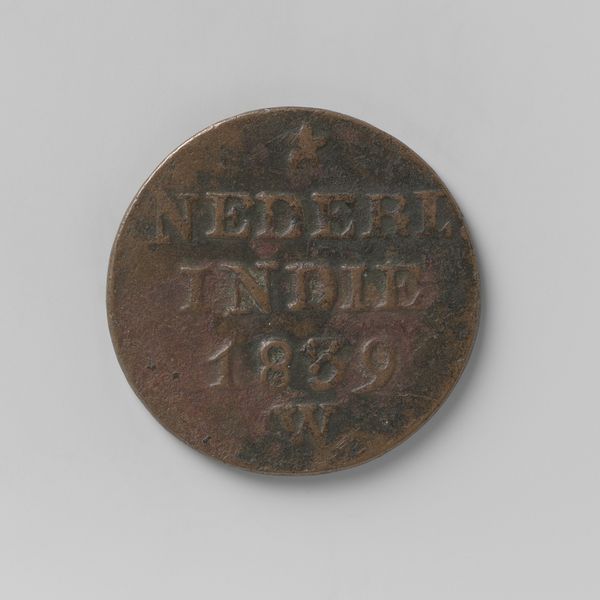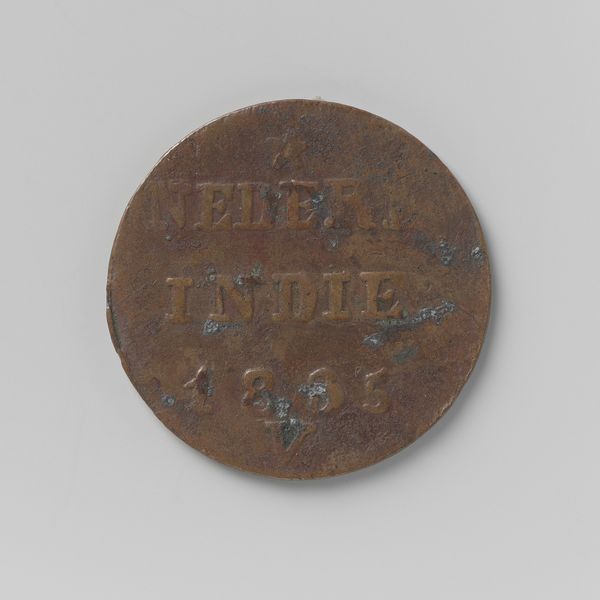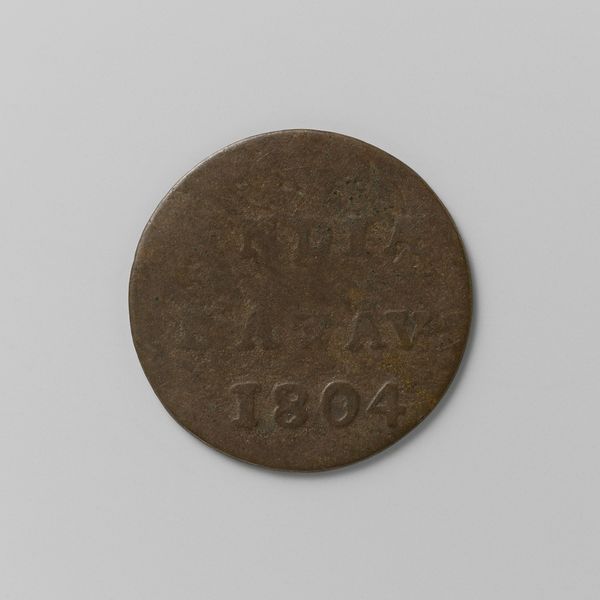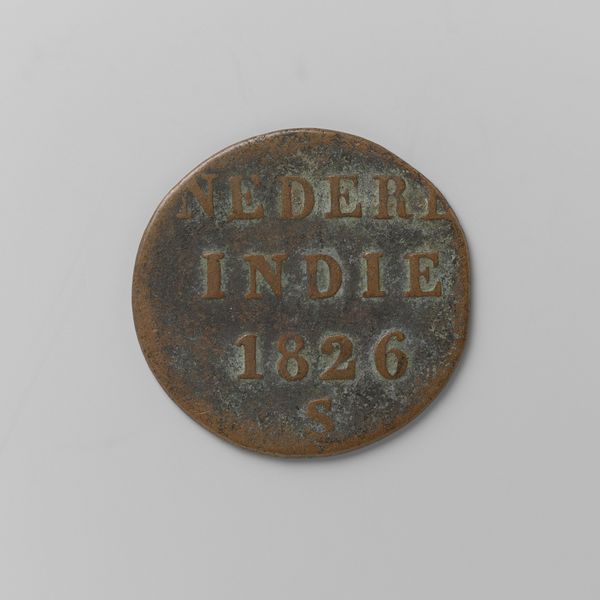
print, metal, engraving
#
portrait
# print
#
metal
#
ancient-mediterranean
#
engraving
Dimensions: diameter 2.8 cm, weight 5.58 gr
Copyright: Rijks Museum: Open Domain
Curator: Here we have a ½ stuiver coin from the Dutch East Indies, dating back to 1818. It's currently held in the Rijksmuseum collection. Editor: Its modest scale immediately draws my attention. Beyond size, it whispers stories of value and trade; there’s almost a world-weariness to its patinated surface. Curator: Absolutely, the wear speaks to circulation. It was produced during the reign of Willem I, and although it's a seemingly small object, it played a role in the economic processes that defined the Dutch colonial empire. Editor: And I am intrigued by the inscription "INDIA BATAV." The very act of imprinting words of place anchors it within layers of historical, economic and power dynamics. Curator: Precisely! This coin exemplifies how raw materials—the metal itself—were transformed into instruments of exchange and power. The choice of metal, its weight, all directly linked to the value assigned to labor and goods. Editor: The abbreviated text creates this condensed symbolic force. What did ‘Batav’ represent to the Dutch versus those living in the Indies? The symbols become potent when interpreted through the lens of cultural perspectives. Curator: Exactly. The mass production of coins like this reveals shifts in colonial administration during the period. One standardized system, imposed across diverse regions to control trade, is something we must analyze when we assess colonial activity. Editor: Its symbolism continues into the present, triggering important conversations around post-colonial power dynamics, particularly repatriation and restitution. It is far from silent; this coin rings loudly with complex ideas. Curator: Indeed. When studying it, we look beyond artistic merit to consider who profited from the exchange. Editor: Ultimately, it is a powerful cultural object. Thank you for highlighting those crucial details. Curator: My pleasure. The conversation on the Dutch East Indies will always remain important to this region’s history.
Comments
No comments
Be the first to comment and join the conversation on the ultimate creative platform.
